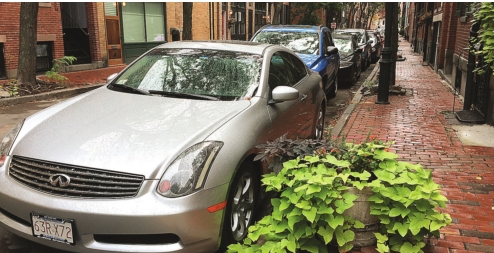
If you live in downtown Boston, good news: your insurance is still lower than the rest of the city.
But rates are constantly being adjusted, and companies are always looking at changes to the neighborhood, a local insurance agent said.
According to the most recent data compiled by the National Association of Insurance Commissioners, in 2019 Massachusetts had the 15th highest combined average annual car insurance premium, coming in at $1,246.
That's an increase of $115 over the previous five years. But while the average insurance in the U.S. was $1,192 in 2019, that was a $180 increase over a similar period.
“The auto industry has gotten a lot more competitive, there are more variations with insurance companies," said Richard Soo Hoo of SooHoo Insurance, which is based in the Leather District.
Mapfre,
aka Commerce, continues to dominate the Massachusetts market at 21.5
percent of drivers, but SooHoo said Geico has made huge strides, coming
in second at 15.8 percent of the market.
And companies calculate variations to the smallest areas.
The
state's Division of Insurance maintains a database for consumers to
look up rates of insurance premiums in their towns for certain example
conditions. Boston is divided into ten area: Brighton, Dorchester, East
Boston/ Charlestown, Hyde Park, Jamaica Plain, Roslindale, Roxbury,
South Boston, West Roxbury and Central Boston which includes areas like
the South End, Back Bay and Downtown.
Within those neighborhoods, rates can change dramatically. The Boston Guardian looked
at rates throughout Boston for the same example driver: a person who
owned a 2013 Toyota Camry, had been licensed for 14 years and had an
excellent driving record.
That
person saw a range of $261 to $1,774, depending on the insurer, in
Central Boston; but in neighboring Roxbury, they'd pay between $411 and
$3,174.
Soo Hoo said
multiple factors can play into why rates in one part of Boston are so
different from another. Having street parking can increase crashes and
therefore rates, and more suburban areas like Brighton and West Roxbury
also saw lower rate ranges.
More expensive, and more frequently stolen, cars can lead to higher rates, as can crime rates within an area.
“Insurance
companies are big on data analytics, what make and model is most
susceptible to being stolen," Soo Hoo said. "They have data
emission-wise, which vehicles get into accidents more, etc. “And the
companies are scrutinizing changes in neighborhoods to make further
adjustments, Soo Hoo said.
While
the Seaport is a newer neighborhood, its residents in high-priced
condos frequently have expensive cars, and Soo Hoo thought that would
soon affect rates there.
And
the South End is also seeing more expensive conditions. “The South End
now has so many new condos and apartments on Albany and Harrison, the
Seaport has an influx of high-end population -- luxury cars drive up
rates," Soo Hoo said.
And
driving records are a huge factor as well. The Department of Insurance
database shows that another example driver of a 2013 Camry who has been
licensed for 20 years -- but had an at-fault accident 18 months ago --
would see a range of $1,255 to $3,943, a massive jump over the other
driver's rate.
The
good news, Soo Hoo said, is that heavily populated areas like Boston,
Worcester and Springfield often have more variations that can reduce
rates as well. Large populations of drivers with AARP or AAA membership
can see discounts that affect the whole area.
But
he said the best way for the city driver to save money is to buy cheap
and find other options when you can -- even if you can afford otherwise.
“You
can afford those luxuries, but why do you need a Mercedes in the city
of Boston?" Soo Hoo said "If you want to go from Beacon Hill to see the
Van Gogh on Albany Street, take an Uber!”